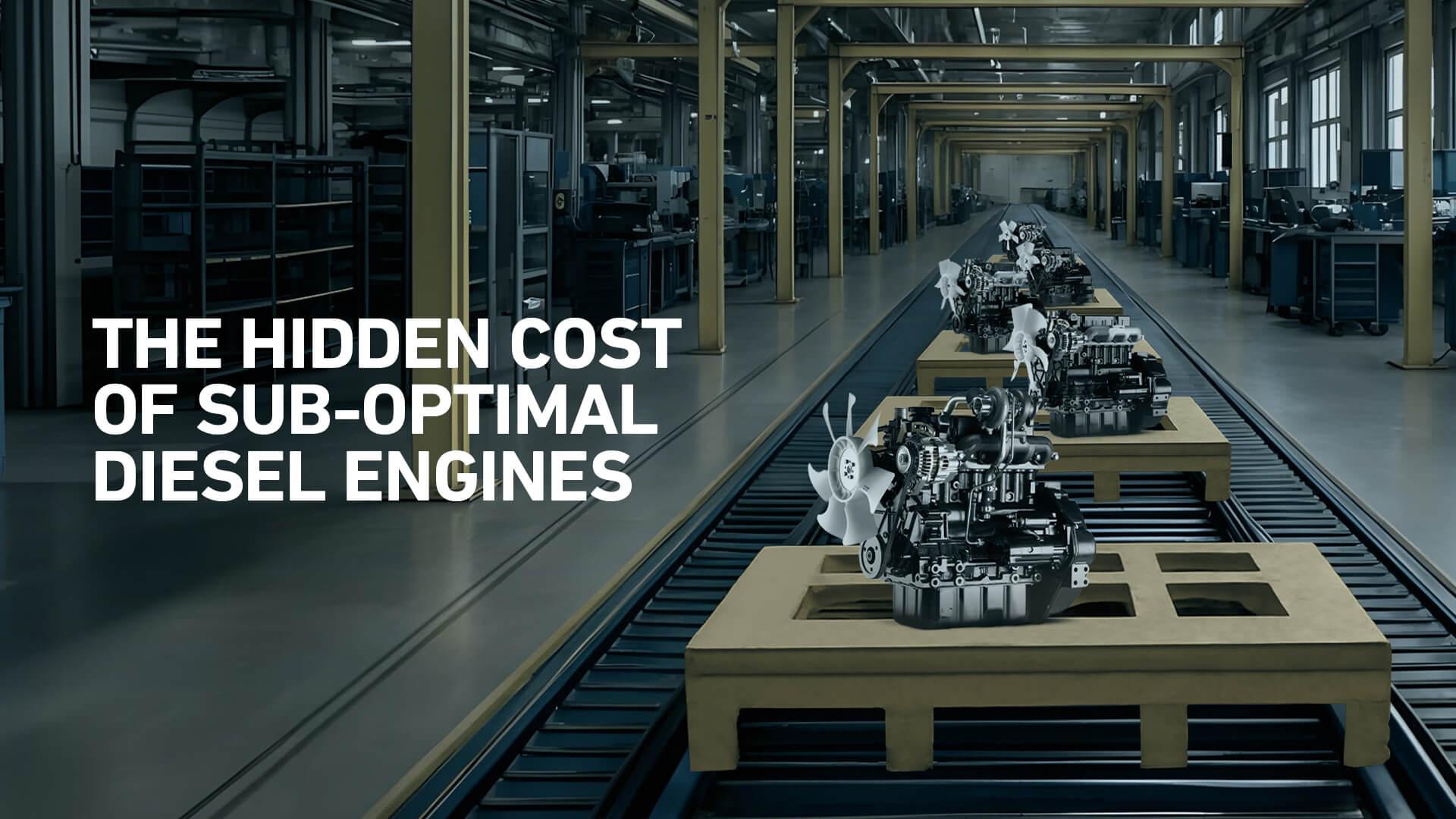The Hidden Cost of sub-optimal Diesel Engines

Diesel engines power industries such as transportation, agriculture, and construction- all critical to global infrastructure. These sectors are highly viable but often come with significant financial demands. To serve these industries effectively, machines and components must deliver optimal performance. But what happens when the engine- the heart of your machine, underperforms and fails to meet the required outputs or results?
An engine’s suboptimal performance may stem from inadequate maintenance, outdated technology, or inefficient operations. This can lead to a cascade of hidden costs that negatively affect profitability, sustainability, and reliability. Let’s explore some of the most frequently overlooked diesel engine problems.
Fuel Inefficiency and High Operational Costs
One of the most critical shortcomings of a diesel engine is fuel inefficiency. A poorly performing engine burns fuel ineffectively, directly increasing operational costs. Here are some common reasons behind this issue:
Clogged fuel injectors or dirty air filters:
A dirty or clogged fuel injector is a cause of low engine efficiency. It limits the fuel reaching the combustion chamber, disrupting the air-fuel ratio and leading to incomplete combustion and reduced engine power.
Incomplete combustion:
Incomplete combustion can cause an uneven fuel supply, leading to rough idling and engine stalling.
Excessive engine idling:
Prolonged idling can consume several gallons of fuel per hour without producing any output, accelerating component wear and wasting fuel.
Premature Engine Wear and Maintenance Challenges
Suboptimal engines are prone to accelerated wear, requiring frequent repairs and overhauls. This not only reduces operational efficiency but also increases costs and the risk of downtime.
Carbon buildup:
Often caused by incomplete combustion and poor fuel quality, carbon deposits can damage piston rings, valves, and turbochargers, leading to expensive maintenance.
Oil contamination:
Contaminants such as blow-by gases or soot can infiltrate the oil, reducing its lubricating properties, increasing friction, and raising the risk of overheating.
Idling-induced wear:
Long-term idling can strain engine components like bearings and seals, accelerating wear and tear.
Environmental and Regulatory Risks
Diesel engines emit pollutants such as nitrogen oxides (NOx) and particulate matter (PM). When an engine underperforms, these emissions can increase significantly. Common issues include:
High-sulfur content fuel:
Older engines that use high-sulfur fuel emit more particulate matter. Combustion of such fuel produces sulfuric acid, which can corrode engine components such as cylinder liners and pistons.
Faulty exhaust systems:
A clogged diesel particulate filter (DPF) fails to filter pollutants, harming the environment and the exhaust system.
Downtime and Lost Productivity
Downtime caused by underperforming engines leads to unplanned halts in operations, creating a domino effect of financial loss and reduced productivity. Contributing factors include:
Neglected maintenance:
Skipping scheduled maintenance can result in engine failures. The cost of emergency repairs is often far greater than that of preventive maintenance.
Complexity of repairs:
Diesel engines are complex systems that require specialised knowledge. Untrained mechanics may inadvertently worsen issues.
Human error:
Improper handling or lack of training can also contribute to unexpected breakdowns and downtime.
Results:
Loss of productivity:
Frequent breakdowns or inefficient performance disrupt operations, reduce revenue, and impact business continuity.
Longer repair times:
Due to the complexity of diesel systems, repairs can be time-consuming and costly.
Strategies to Reduce Hidden Costs
Regular maintenance:
Conduct routine oil changes and replace filters. Regularly inspect components such as injectors and glow plugs to ensure proper functioning.
Upgrading technology:
Invest in modern, clean diesel technologies that reduce emissions and boost efficiency.
Training mechanics:
Provide comprehensive training to mechanics for managing complex diesel systems.
Preventive measures:
Address small issues early to prevent them from becoming big problems.
Economic planning:
Evaluate the cost-effectiveness of diesel-powered equipment compared to alternatives like electric or hybrid systems.
Conclusion
For industries that depend on diesel power, efficiency is more than an engineering metric — it’s a financial necessity. The hidden costs of a suboptimal diesel engine can far outweigh the savings from deferred maintenance. Investing in updated technology, proactive maintenance, and skilled personnel can significantly cut long-term costs and align with global sustainability standards.
By confronting these challenges proactively, businesses can transform diesel engines from liabilities into assets of reliability and efficiency. The path to optimisation starts by recognising that every drop of wasted fuel, every hour of idle time, and every skipped maintenance check carries a cost that adds up faster than most realise.




